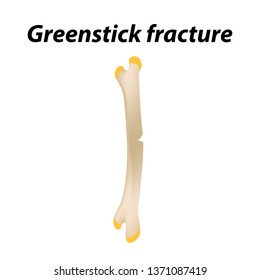The Relationship In Between Pose And Pain In The Back: Techniques For Maintaining Appropriate Placement During The Day
The Relationship In Between Pose And Pain In The Back: Techniques For Maintaining Appropriate Placement During The Day
Blog Article
Material Composed By-Fletcher Thaysen
Preserving proper stance isn't almost sitting up directly; it has to do with aligning your body in such a way that sustains your spinal column and lowers the threat of back pain. The way you sit, stand, and move throughout the day can significantly influence your spinal wellness. Yet how exactly can you make certain excellent alignment regularly, also during busy days loaded with different tasks? Allow's dive deeper right into the refined yet impactful modifications you can make to your daily routine to maintain your back satisfied and healthy.
Relevance of Appropriate Posture
Appropriate posture is essential in maintaining a healthy and balanced back and avoiding pain. When https://whichdoctortoseeaftercara39517.like-blogs.com/30231474/real-life-testimonials-the-positive-effect-of-chiropractic-care-on-quality-of-life sit or stand with good pose, your spinal column is in alignment, decreasing strain on your muscles, ligaments, and joints. This alignment permits the body to disperse weight uniformly, preventing excessive stress on certain locations that can result in pain and discomfort. By maintaining your spinal column appropriately straightened, you can additionally improve your breathing and digestion, as slouching can compress body organs and limit their functionality.
Moreover, preserving great posture can boost your total appearance and confidence. When https://www.healthline.com/health/si-joint-stretches stand tall with your shoulders back and head held high, you exhibit self-confidence and show up even more friendly. Great posture can also make you really feel extra invigorated and sharp, as it promotes correct blood flow and enables your muscles to function successfully.
Incorporating proper position into your daily routine, whether resting at a workdesk, walking, or exercising, is important for avoiding pain in the back and promoting general wellness. Remember, a little change in exactly how you hold yourself can make a substantial difference in just how you feel and operate throughout the day.
Common Postural Mistakes
When it comes to keeping great posture, lots of individuals unwittingly make common mistakes that can add to pain in the back and pain. Among the most common errors is slumping over or stooping over while sitting or standing. This placement places too much pressure on the spinal column and can cause muscular tissue discrepancies and pain in the long run.
One more usual error is overarching the reduced back, which can flatten the natural contour of the spinal column and create discomfort. Furthermore, crossing legs while resting might really feel comfy, yet it can create an imbalance in the hips and hips, resulting in postural issues.
Using a pillow that's also soft or too strong while resting can likewise affect your positioning and add to back pain. Lastly, frequently craning your neck to take a look at screens or readjusting your setting often can strain the neck and shoulders. Being mindful of these usual postural mistakes can assist you maintain better positioning and decrease the danger of neck and back pain.
Tips for Correcting Placement
To improve your alignment and decrease back pain, it's vital to concentrate on making small modifications throughout your everyday regimen. Beginning by being mindful of your position. When resting, guarantee your feet are level on the floor, your back is straight, and your shoulders are relaxed. Avoid slouching or leaning to one side. Use ergonomic chairs or pillows to support your reduced back.
When standing, distribute your weight evenly on both feet, maintain your knees somewhat curved, and embed your pelvis. Involve your core muscles to support your back. Take breaks to extend and walk if you have an inactive job. Include workouts that enhance your core and back muscles, such as planks or bridges.
While sleeping, make use of a pillow that supports the natural contour of your neck to preserve correct spine alignment. Prevent sleeping on your belly, as it can stress your neck and back. By being mindful of these pointers and making small adjustments, you can slowly remedy your alignment and relieve neck and back pain.
Conclusion
Bear in mind, keeping great pose is crucial to stop pain in the back and promoting back wellness. By bearing in mind your alignment, dispersing weight uniformly, and engaging your core muscles, you can minimize pressure on your back and decrease the threat of discomfort and injury. Incorporate ergonomic support, take regular breaks to stretch, and strengthen your core and back muscles to maintain correct placement throughout the day. Your back will thank you for it!
